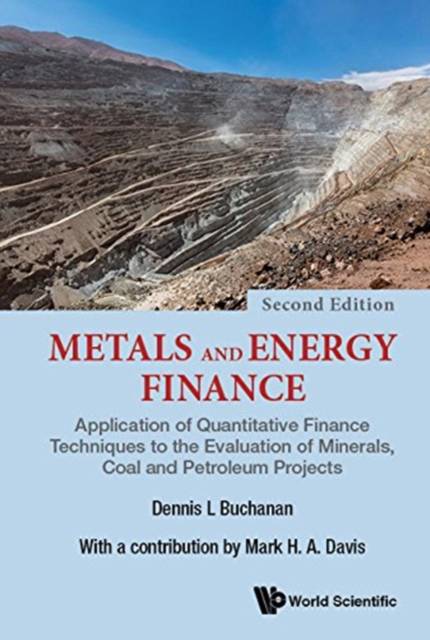
- Retrait gratuit dans votre magasin Club
- 7.000.000 titres dans notre catalogue
- Payer en toute sécurité
- Toujours un magasin près de chez vous
- Retrait gratuit dans votre magasin Club
- 7.000.0000 titres dans notre catalogue
- Payer en toute sécurité
- Toujours un magasin près de chez vous
Metals and Energy Finance: Application of Quantitative Finance Techniques to the Evaluation of Minerals, Coal and Petroleum Projects (Second Edition)
Dennis L Buchanan, Mark H a Davis
Livre broché | Anglais
88,95 €
+ 177 points
Format
Description
'Dennis Buchananâ (TM)s text clearly shows how an understanding of the complementary disciplines of geoscience, conventional engineering and advanced financial engineering is essential to making the right decisions concerning how to appraise a resource or project and how to structure the funding of natural resources assets in order to mitigate technical and financial risk and to maximise value for owners. Crucially, the book also looks at how other sources of capital, such as limited recourse lenders, appraise metals and energy assets. Such an understanding is essential to optimising the capital structure and valuation of natural resources assets ... The advanced methodologies revealed in Dennis Buchananâ (TM)s book will have great value to those working in the technical and financial functions, or to those spanning both functions, of the natural resources industry. 'Mineral EconomicsGiven the design component it involves, financial engineering should be considered equal to conventional engineering. By adopting this complementary approach, financial models can be used to identify how and why timing is critical in optimizing return on investment and to demonstrate how financial engineering can enhance returns to investors. Metals and Energy Finance capitalizes on this approach, and identifies and examines the investment opportunities offered across the extractive industry's cycle, from exploration through evaluation, pre-production development, development and production. The textbook also addresses the similarities of a range of natural resource projects, whether minerals or petroleum, while at the same time identifying their key differences.This new edition has been comprehensively revised with a new chapter on Quantitative Finance and three additional case studies. Contemporary themes in the revised edition include the current focus on the transition from open pit to underground mining as well as the role of real option valuations applied to marginal projects that may have value in the future.This innovative textbook is clear and concise in its approach. Both authors have extensive experience within the academic environment at a senior level as well as track records of hands-on participation in projects within the natural resources and financial services sectors. Metals and Energy Finance will be invaluable to both professionals and graduate students working in the field of mineral and petroleum business management.
Spécifications
Parties prenantes
- Auteur(s) :
- Editeur:
Contenu
- Nombre de pages :
- 328
- Langue:
- Anglais
Caractéristiques
- EAN:
- 9781786346278
- Date de parution :
- 28-12-18
- Format:
- Livre broché
- Format numérique:
- Trade paperback (VS)
- Dimensions :
- 152 mm x 229 mm
- Poids :
- 449 g

Les avis
Nous publions uniquement les avis qui respectent les conditions requises. Consultez nos conditions pour les avis.






